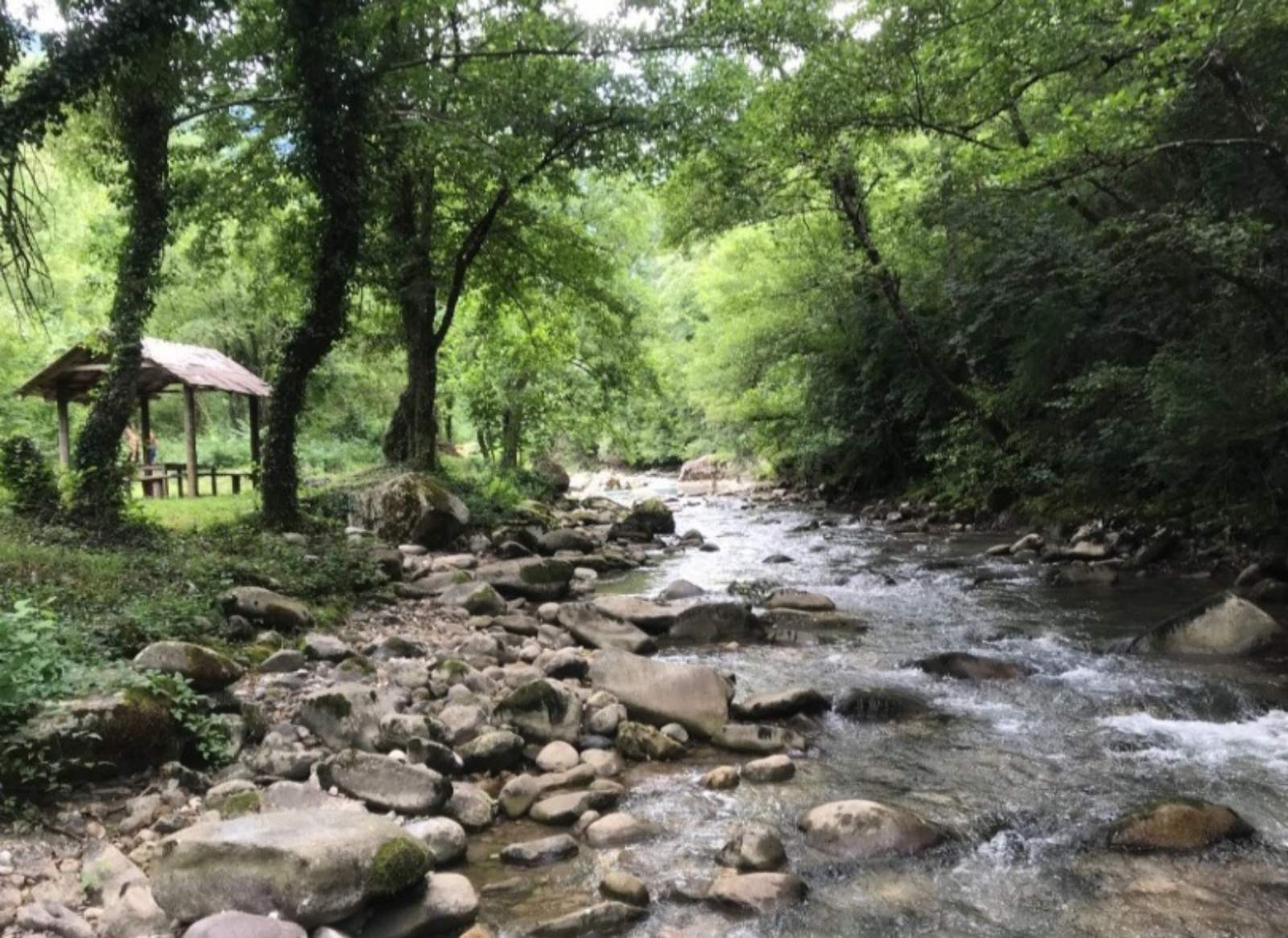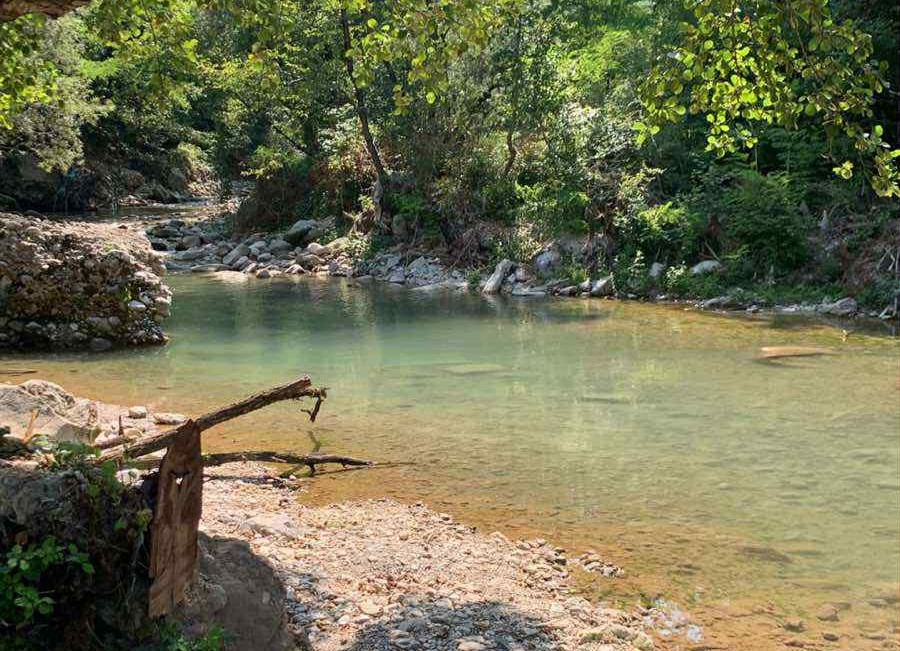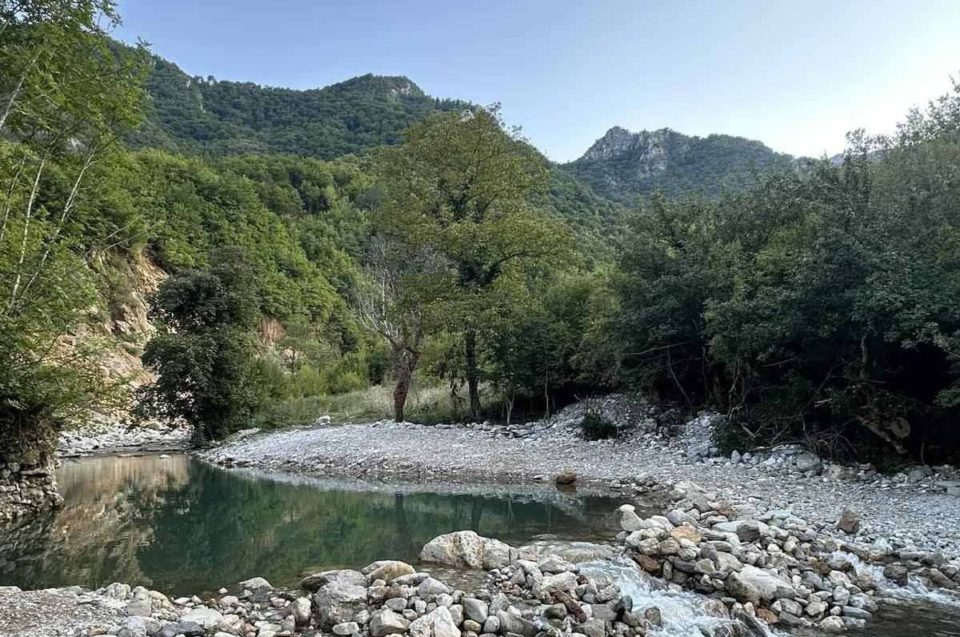
The Doljanka River, located in the very heart of Herzegovina in Jablanica Municipality, can be described as peaceful, clean, and untouched.
Locals also call it a natural wonder that still resists mass tourism and thus retains its untouched charm. In order to protect the natural value of the river and the environment, especially after the natural disaster in October last year, cleaning and remediation efforts are being undertaken, alongside environmental awareness and public educational campaigns, particularly for young people.
The Doljanka River rests below the Vran Mountain, at around 1,100 meters above sea level. The river’s course runs about 18 kilometers through villages, dense forests and meadows, before finally flowing into the Neretva River near Jablanica. Its path is adorned with waterfalls, rapids, and peaceful backwaters, making it an ideal place for various outdoor activities.
The cold, crystal clear water of the Doljanka is home to trout and grayling. It is not surprising that fishermen from all over Herzegovina come to partake in this hobby and commune with nature. In summer, the Doljanka is a favorite destination for locals and visitors alike. Natural pools and small waterfalls offer the perfect spots for swimming and refreshment, while quiet areas along the river offer opportunities for picnics and resting in the shade.
In addition to its beauty, the Doljanka is extremely important for its ecosystem. Its shores are the habitat of many plant and animal species, and the locals consider it a rare natural treasure that should be protected from pollution and excessive construction. The ”For Doljanka” Association of Jablanica was founded to protect the natural resources of the Doljanka as well as its surroundings, and to raise public environmental awareness, particularly among young people.
Edin Salihagić, the vice president of the ”For Doljanka” Association, explained that they are working on environmental rehabilitation, removing waste from the riverbank, rehabilitation, and permanently closing unsanctioned landfills in Jablanica municipality. They organize educational ecological workshops for students on topics such as waste sorting, climate change, protecting natural resources, and specific challenges related to the Doljanka River.

As part of the “Cleaning the Doljanka River” project from February 17 this year, Salihagić stated that they organized 13 work details to clean the banks of the Doljanka River. A total of 393 students took part in these initiatives, including 383 secondary school students and ten students from the Mostar Faculty of Medicine.
They collected 40 cubic meters (CBM) of waste, of which 28 CBM was mixed, and 12 CBM was plastic. In this operation, they cleaned about 700 meters of the Doljanka riverbank.
Needed Cleaning Machinery
Salihagić said that between 3,000 and 4,000 meters of the Doljanka riverbed are polluted. However, they lack the necessary machinery for the task and manual cleaning is impossible. They have been in discussions to procure a spider dredge, which is able to pass through the riverbed without causing additional damage, and separate large accumulations of waste. While these discussions have yet to bear fruit, they appear promising.
As part of the project, Salihagić explained that they have held a total of 20 workshops, 18 of which were in high schools and two at universities. A total of 546 students attended the workshops, including 518 high school and 30 university students.
Hydroelectric Power Plants: More Harm than Good
Of the three small hydroelectric power plants (HPP) planned for the Doljanka River, one has been constructed so far – the Zlate HPP. Salihagić explained that this power plant is not in operation because the Court of Bosnia and Herzegovina annulled its permits and part of the pipeline was damaged in the 2024 floods, necessitating reconstruction before it can be operational.
Asked whether HPPs are positive or negative, Salihagić replies that, in principle, they are good and use energy from renewable sources. However, the problem lies in the way they are constructed, because ecologically efficient HPPs yield no profits for investors.

The way that HPPs are constructed in Bosnia and Herzegovina and the region, Salihagić explains, is harmful for several reasons. Ecologically, it results in the destruction of river ecosystems, the loss of biodiversity, and deterioration of water and land quality. It also leads to social and economic damage, with minimal contribution to the community, prioritizing private profit over public benefit. Additionally, there are safety risks, including increasing the possibility of landslides and floods as well as hazards arising from poor monitoring and non-compliance with permits. Finally, in terms of energy, HPPs make a very small contribution to the power system while exacting high tolls on state budgets.
In trying to clean and protect the Doljanka, as well as the environment, Jablanica residents consider this river part of their identity and that of their municipality. They are sure that all those who have visited for fishing, swimming, or a holiday in nature carry memories that make them want to return. Describing the beauty of the Doljanka River, they say it is most beautiful in spring and summer when nature is in full bloom.
“Once you feel its coolness on a hot Herzegovina day, you know that the Doljanka is a real hidden gem,” said one Jablanica local.






